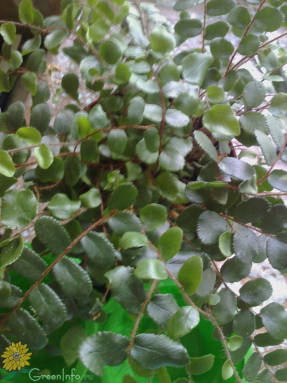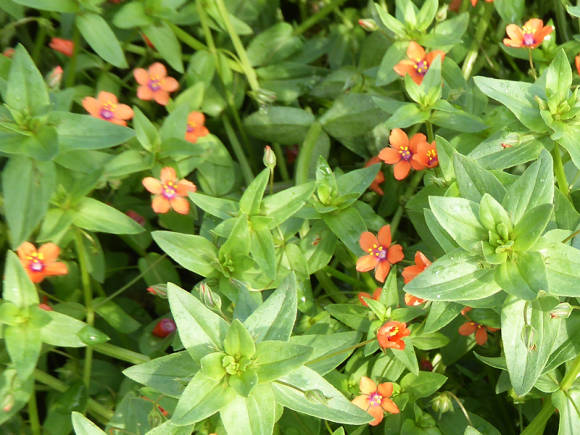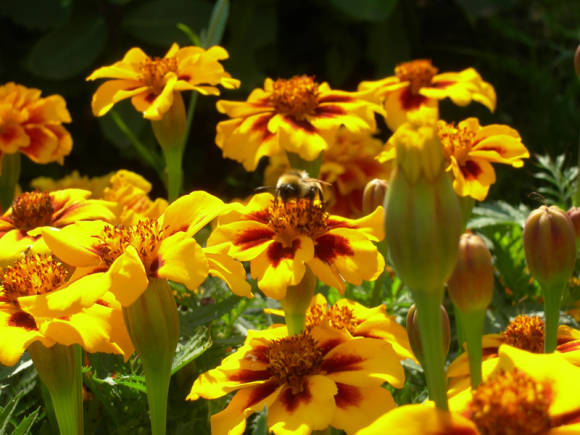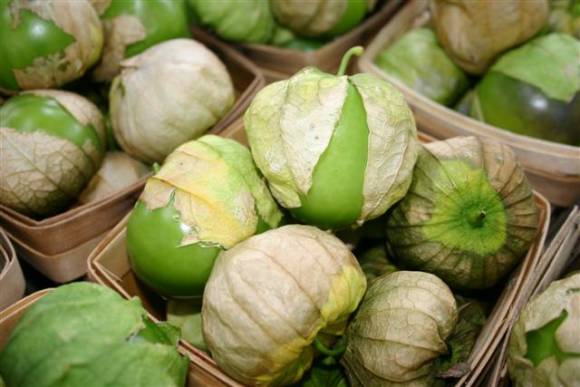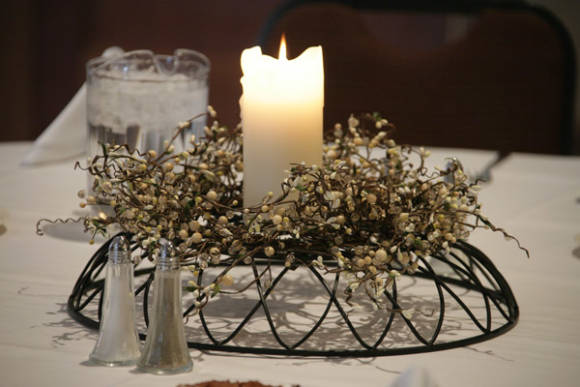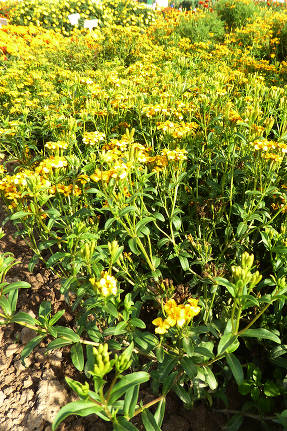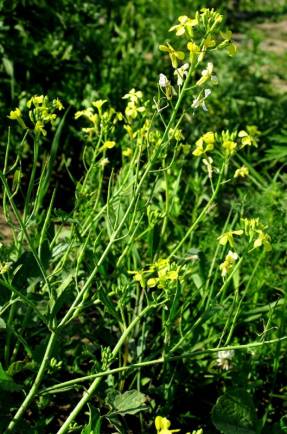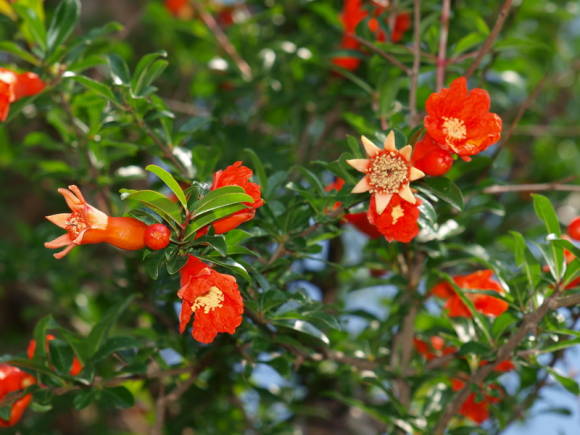
Melissa officinalis, or lemon (Melissa officinalis) - perennial herbaceous aromatic plant. Two thousand years ago, it was grown by the ancient Greeks and Romans, adding to food to whet the appetite.
The word "melissa" in translation from Greek means "honey". It is worth rubbing the walls of the hive with this grass, and the bees flock to it, as if by magic. Other names of this plant - bee mint, honey cake, swarm, queen bee, bee - are also associated with bees in many peoples.
In Western Europe, it is cultivated in almost every garden and even on balconies and loggias. In Russia, this plant has also been known for a long time, but it is rather rare in gardens and vegetable gardens.
Outwardly, lemon balm looks like stinging nettle. She has the same erect, tetrahedral branched stems up to 80 cm high, the whole plant is densely covered with leaves. Leaves are ovate, petiolate, dark green, toothed, along the edges, covered with glandular hairs. Melissa blooms from July to September. Its pale blue or pale pink flowers on short pedicels are located in the axils of the upper leaves.

Lemon balm varieties
The most common in gardens are two varieties of lemon balm: Quedlinburg creeping - with a highly branched stem and Erfurt upright - with a straight stem, as well as other local populations, which differ in the shape of the bush, the timing of flowering and winter hardiness. But now you can find good new varieties in stores:
- Dozya... The rosette of leaves is semi-raised, up to 80 cm high. The leaf is dark green, slightly wrinkled, slightly pubescent. The flower is small, white.
- Pearl... The rosette of leaves is half-raised, up to 100 cm high. The number of shoots is 25–70. The foliage is good. The leaf is short petiolate, dark green, without wax coating, slightly wrinkled and smooth. Resistant to adverse environmental conditions.
- Isidora... The rosette of leaves is horizontal, up to 70 cm high. The leaf is ovoid, green, slightly wrinkled. The flower is small, white.
- Quadrille... The rosette of leaves is raised, semi-closed, the number of shoots is up to 15. The leaf is medium-sized, green, without anthocyanin. The flower is small, light lilac.
- Lemon flavor... The rosette of leaves is semi-raised, up to 60 cm high. The leaf is ovoid, dark green, with a weak waxy bloom.
- Freshness... The rosette of leaves is half-raised, 60 cm high. The leaf is medium-sized, dark green. The flower is small, bluish-white.
- Tsaritsynskaya SEMKO... The plant is upright, 50–70 cm high, branched. The foliage is high. The leaves are small, ovoid, light green to green in color, with a strong lemon scent.

Growing lemon balm
Winter hardiness... Lemon balm hibernates well in the open field with sufficient snow cover. In autumn, in places unprotected from cold weather, it is advisable to mulch it with peat or dry leaves. In addition, one should not forget that the winter hardiness of plants over the age of 5 years is greatly reduced.
Pick-up location... To grow lemon balm, you need to choose warm, sunny places, well protected from cold winds. Well-lit southern slopes are best for this. In shaded areas, lemon balm also grows well, but it becomes less fragrant. At the same time, one should not forget that the place for lemon balm should be outside the garden crop rotation, because with good care, it will bloom and bear fruit for up to 10 years.
The soil... Lemon balm grows best on humus-rich, moderately moist, medium loamy soils. It does not tolerate acidic and heavy clay soils and strong moisture.
For a family of 3-4 people, it is quite enough to have 5-6 plants on the plot, so a large plot is not required to grow it. But since it develops a large vegetative mass annually and grows in one place for 6–8 years, the preparation of the soil must be taken seriously.
Soil preparation begins in the fall. The soil is dug to a depth of at least 30 cm, making 1 sq.m 8-10 kg of rotted compost, 2 tbsp. tablespoons of superphosphate and potash fertilizers. If necessary, add lime in the required amount. In the spring, they bring in 1 sq. m 1 teaspoon of urea, dig up the soil to a depth of 12-15 cm and carefully leveled.

Sowing in open ground... When sowing seeds directly into open ground, they are sown in the spring in a heated ground. The distance between the rows requires 50–60 cm, between the plants after thinning - 25–30 cm. The seeding depth is 0.5–1 cm. With deep seeding, seedlings do not appear at the same time. Seeds germinate at a temperature of + 10 ... + 12 ° C.
Usually shoots appear in 25-30 days. Therefore, to facilitate weed control, lemon balm seeds should be sown together with lighthouse seeds (lettuce, watercress, Chinese cabbage), which sprout quickly and, by the time the lemon balm emerges, will mark its rows and will be ready for harvesting.
Sowing through seedlings... When growing lemon balm seedlings, the seeds are pre-soaked for 3-4 days, then sown in a sowing box, which must be kept on a lighted windowsill. melissa is light-requiring.
Seedlings, when the first pair of true leaves appear, dive into paper cups or plastic bags with soil. At this time, it is necessary to maintain normal water, air, temperature and light conditions.
In open ground, seedlings are planted at the age of 60–65 days at the end of May according to the above scheme. Lemon balm seedlings can also be grown in cold nurseries for autumn planting.
Reproduction of lemon balm... For reproduction of lemon balm by dividing the bushes, 4-5-year-old plants are chosen and divided into 3-4 parts in the third decade of May, when shoots grow on them, or at the very end of August.
It is easy to propagate lemon balm and layering like black currants. To do this, in June, you need to pin the shoots of an adult plant to the ground, sprinkle them with a mixture of humus and peat and water them often. By autumn, roots are formed on such shoots, and in the spring of next year, young plants can be separated and planted in a permanent place.
Melissa care on the plantation of the first year consists of thinning young plants, loosening row spacings, weeding, watering and feeding after cutting the greenery.
Top dressing... In the second and subsequent years during the growing season, lemon balm is fed twice with full mineral fertilizer, 1 teaspoon per 1 sq. m or mullein solution (1:10). The first time this is done in early spring, and the second - after cutting the leaves.
Collecting greens... If lemon balm was propagated by sowing seeds, then in the first year only one collection of greens should be done, and from young plants grown from separated plants, the leaves are collected twice. From perennial plants, greens are harvested in two steps - in the budding phase, and then after 30 days. It is best to harvest the leaves from the plants in the afternoon.
Lemon balm greens, if necessary, are washed and dried quickly, preferably in the shade and in a draft, because they turn brown very quickly. For all types of drying, the temperature should not exceed 35 ° C. Dry greens are put in glass jars and tightly closed. Store it in a dark place for no more than a year, because then it quickly loses its flavor.
 |  |
Growing lemon balm indoors
Lemon balm can also be grown in room culture. In this case, in the fall, you should dig up one or two lemon balm bushes and plant them in pots that can be placed on the windowsill. The main condition is good lighting, additional lighting is desirable.
In the spring, cuttings are cut and rooted from the bush, and the bush itself is divided into several parts. With the onset of warmth, both are planted in the ground. With such a cultivation, it is easy to prepare an amount of greens of this spicy-aromatic plant that is quite sufficient for one family. And in winter, you can pinch fresh leaves on the windowsill.
And if we add to this the decorative appearance of lemon balm and the phytoncides released by the plant into the air, it turns out that this is almost the most versatile and useful indoor plant.

Culinary recipes with lemon balm:
- Aromatic sugar with aromatic herbs or flowers
- Scallop skewers with lemon balm and red onion
- Summer herbal tea "Dachny"
- Red currant compote with herbs "Aroma of summer"
- Tomato salad with Adyghe cheese, lemon balm and mint
- Spicy sbiten
- Fruit tea with sage, lemon balm, geranium and red rose petals
- Jerusalem artichoke salad with dill seeds and lemon balm
- Lemon balm and red cabbage salad
- Herbal tea "Energy of Life"
- Balm "Melissa Spirit"
- Lemon balm tea
- Vegetable soup with lemon balm
- Lungwort salad with lemon balm
- Potato salad with lemon balm
"Ural gardener", No. 43, 2018
